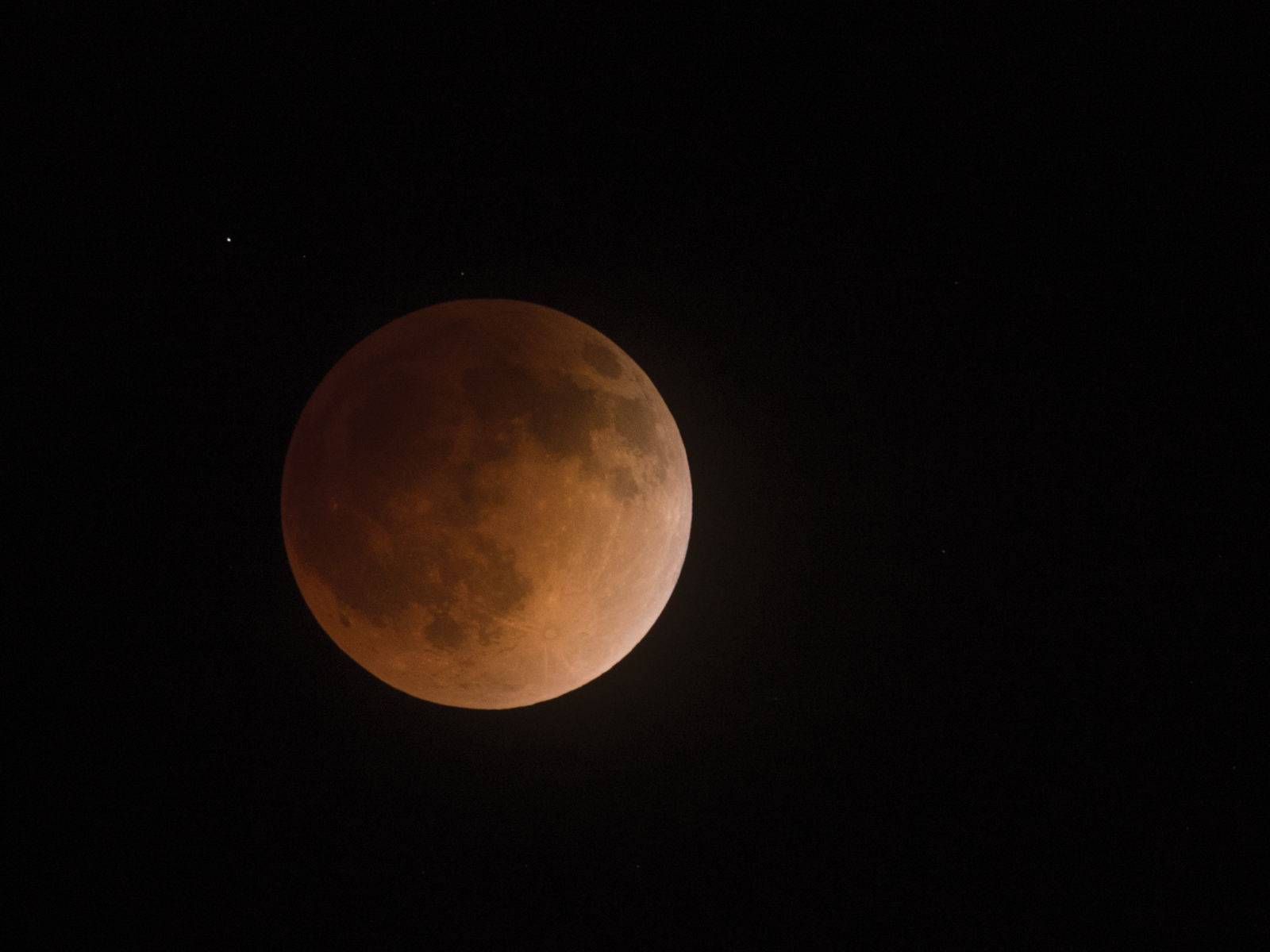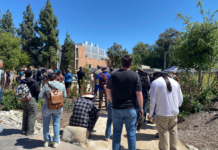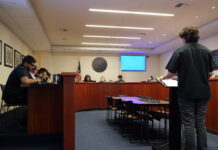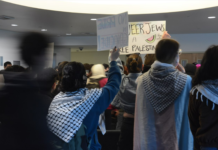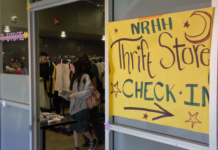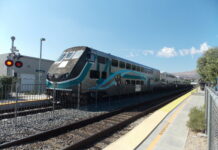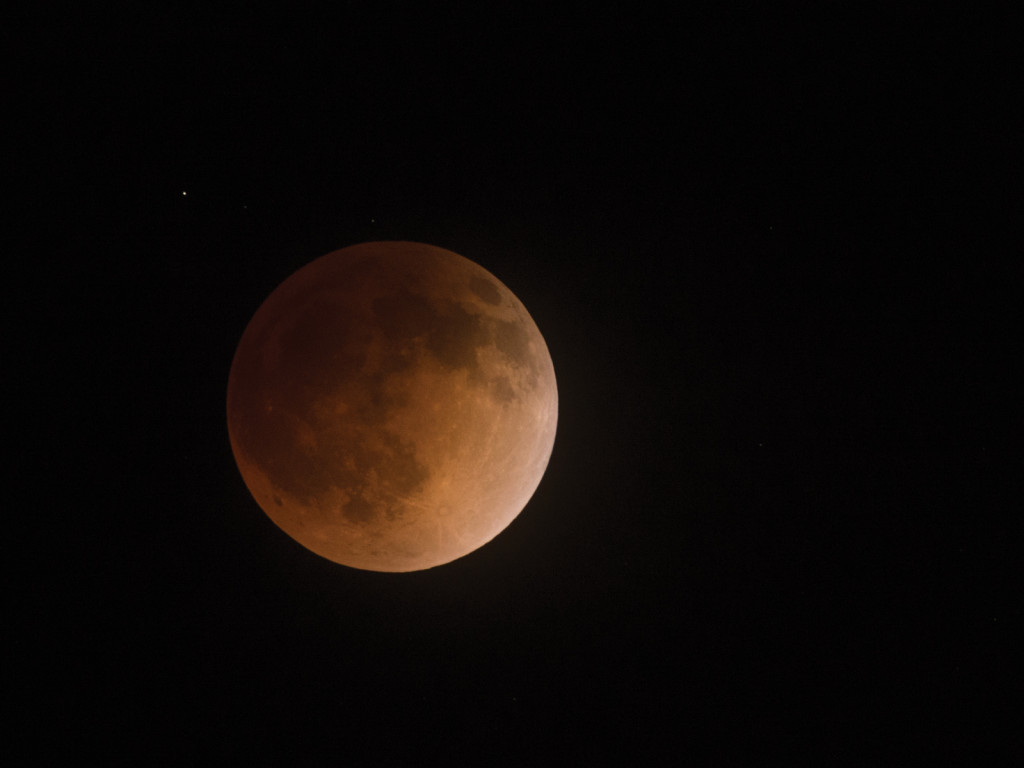
Bundled up on a cool night, first-year biology student Amin Sadat Khansari looked up at the full moon gleaming above and said, “This is the kind of experience that makes college fun.” Khansari was one of more than 100 attendees who gathered at the UCR Bell Tower from 2 a.m. to 4 a.m. on Oct. 8 for a public viewing of a total lunar eclipse — the last one of the year. The event was organized by Mario De Leo-Winkler, a physics and astronomy postdoctoral researcher at UCR, as part of an outreach program designed to get students interested in astronomy.
“We wanted everyone to know more about what a lunar eclipse is and how it helped ancient civilizations get acquainted with the night sky and the natural phenomena,” Winker said as another purpose behind the event.
A total lunar eclipse, also known as a blood moon, occurs as the moon passes through the earth’s shadows. The glaring moon gradually grows darker as it recedes further into the shadows. Rather than becoming consumed by darkness, the moon begins to glow with a faint copper or red color; a result of sunlight being bent and filtered through the Earth’s atmosphere. The total lunar eclipse, which was observed early Wednesday morning, can only occur during a full moon.
As Winkler explained to curious onlookers in a brief Q-and-A, the color of the moon during the lunar eclipse is also a good measure of what’s happening in Earth’s atmosphere. If the moon is a darker shade during the eclipse, it could mean that the atmosphere is polluted from volcanic activity or other events.
With clear skies, as was the case early Wednesday morning, the lunar eclipse remained visible throughout Southern California and could be seen with the unaided eye. Luckily for students and community members at the event, two high-quality telescopes were provided to enhance the viewing experience.
Although many attendees were not astronomy majors, there was a definitive interest in watching the eclipse. “I love the moon!” said Sarah Quintero, a first-year pre-business major. When asked how long she was planning on waiting for it, Quintero quipped, “As long as it takes.”
A parade of 25 or so freshmen also arrived from the dorms. Others showed up in smaller groups, such as Nicholas Chavez and Stephen Waddington, both third-year creative writing majors who recently transferred to UCR. Although both had limited experience in astronomy, they agreed that the possibility of a blood moon was too good to pass up. As a couple of night owls, they said this gave them a fun thing to do with their time.
De Leo-Winkler and the physics and astronomy department are hosting another event for a solar eclipse on Oct. 23 at the UCR Bell Tower. This will be the last such occurrence until 2017. Winkler also added that there would be 50 protective sunglasses available to students. Students who are interested can find out more information at www.facebook.com/astroucr.

